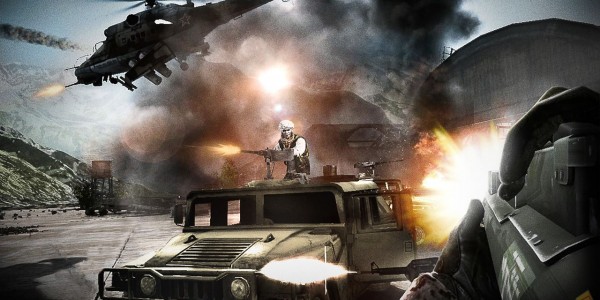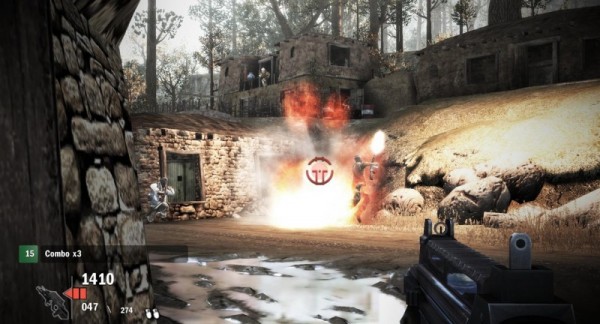As I exchange fire within the on-rails shooter, Heavy Fire: Afghanistan, no feelings that generally resonate with militaristic subject-matter are present. There’s no sense of urgency or importance, no attempt is made at anything beyond superficial conflict, and even the bombastic spectacles that drive home the thrill of warfare in many of today’s military shooters are nowhere to be seen. Either way, I continue to be transported from cover to cover, turret to turret. I guess I’m just along for the ride.
The on-rails action works well to keep action flowing at a near-constant pace, but the ride restricts the agency that gives war games the context that they so often need. Without control, how does one see why we’re at war in the first place? Am I there to protect something, perhaps defuse a bomb? Or am I just there to shoot some Afghans and have a bit of “fun”? I found myself asking this question throughout, without an answer. There is no overarching conflict, but Heavy Fire doesn’t care.
Each mission is the realization of one soldier’s journal entries from combat, detailing small goals of the squad. These missions, though based on separate events, are much the same and do little to differentiate themselves from anything early on. I think at one point during my ride through a red-barrel-ridden, insurgent-strewn, urban Afghan town, a car blew up and whizzed past me a few yards ahead. That was the extent of my memory of that mission. I don’t remember what my goal was or where it fit in with what I had previously done. I remember that I shot some people, though.
Heavy Fire: Afghanistan is the product of an envisioning of nostalgic design and the present-day modern warfare phenomenon. This union is supposed to make for an enjoyable ride, but I’d rather not invest my time in a ride that feels so pervasively unthoughtful — disrespectful, even.



















